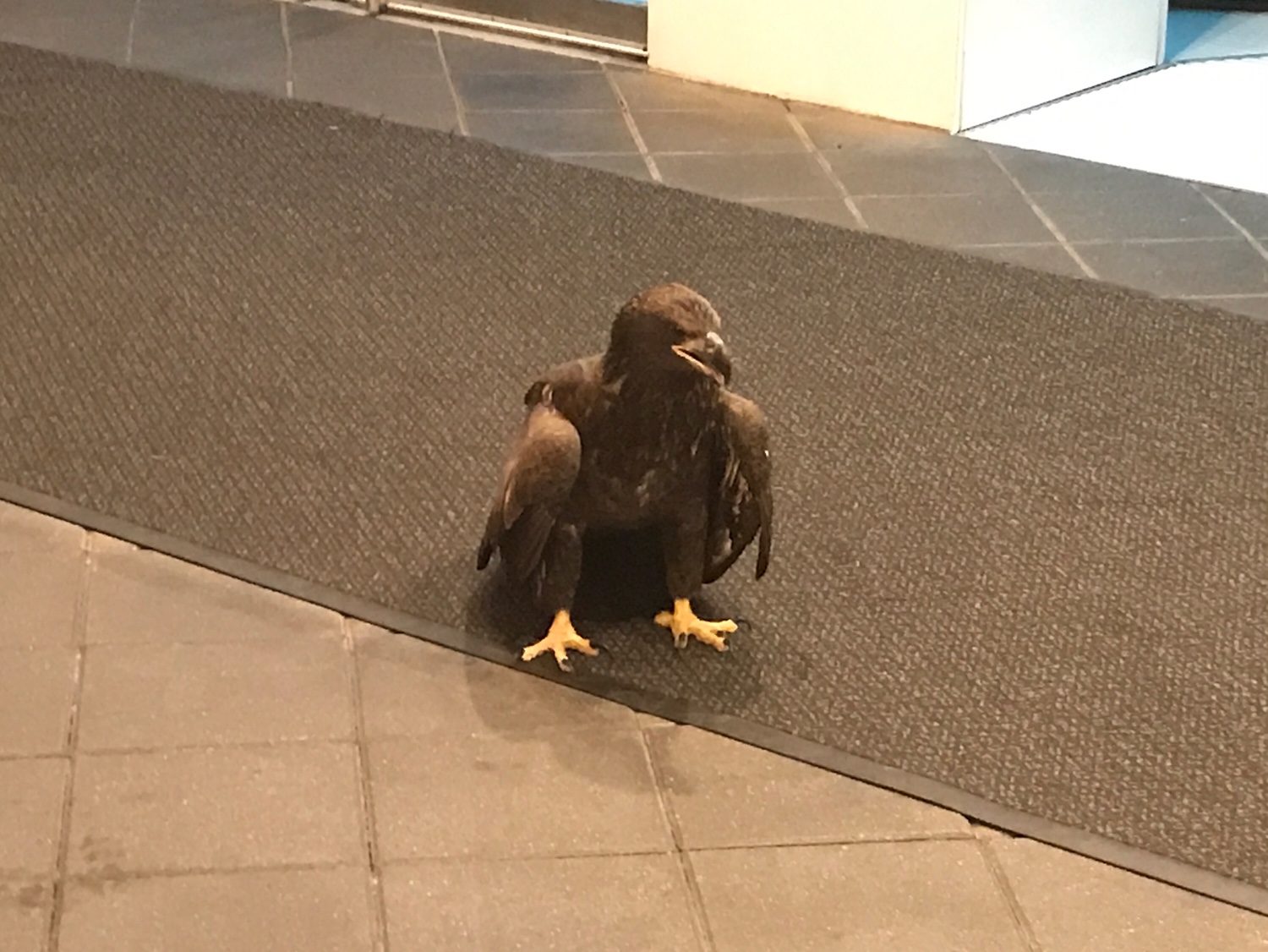
The fallen
Wildlife rescuers are hoping for a better outcome for a bald eagle found injured downtown late Monday,
the second of two bald eagles found injured near the Lake Michigan shoreline in as many weeks. The first bird died.
A 1-year-old female bald eagle is believed to have flown into the Sofitel Hotel, 20 E. Chestnut St., Monday night. The hotel's general manager said one of his employees called police and Chicago Animal Care and Control to ensure the health of the animal and the safety of hotel guests and staff.
Birds flying into Chicago buildings are common enough that the volunteer group Chicago Bird Collision Monitors was founded in 2003, but the group's director, Annette Prince said she hasn't heard of an eagle striking a city building since that same year.Tuesday morning, the young eagle was taken to Flint Creek Wildlife Rehabilitation in Barrington, which cares for about 3,400 animals a year - about 2,800 of them birds - said that group's founder, Dawn Keller, who was also surprised by the incident.
"To have two come in right off the lakefront in that short of a period of time is remarkable," Keller said. "That was surprising to me."The first eagle, found about two weeks ago, died within an hour of being picked up near Gillson Park in Wilmette, Keller said.
"That bird died almost immediately after we picked it up. I actually think it was in the process of dying when we picked it up, unfortunately," she said.
The first bird was a 1-year-old male bald eagle and the bird found near the hotel is a 1-year-old female bald eagle. The primary difference between them was size, Keller said, adding that females are the larger birds.
Absent the signature white feathers on their heads at such a young age, the birds have brown plumage until they mature and there are no physical characteristics other than size to suggest a bird's sex. The birds were too young to be mates, Keller said, and no testing has been done to show if the two birds were related. Any possible connection between the birds will never likely be known, she said.
"Why these two happen to be present, at this time, along the lake ... I can't even begin to tell you," she said.The female eagle was found to be suffering from feather lice, which can be an indication that the bird is unhealthy in other ways. Blood was to be drawn from the bird and checked to see if she has underlying health issues that would prevent a full recovery. Should everything else come back OK, the bird will likely be returned to the wild in a matter of weeks.
Pending the blood test results, Keller said she couldn't estimate recovery time for the bird.
Despite their less than stellar health, two eagles found along near the lake within two weeks could be a positive sign.
"It's probably just indicative of the fact that eagles are making a recovery in the area," she said. "I think it speaks to an increase in population, which as you likely know, was really in decline."
Keller said as the national eagle population bounced back, birds first began populating areas on the east and west coasts and the recovery now has reached the middle of the country. Mature eagles are nesting with their fledgling families this time of year, which may be responsible for driving the 1-year-old birds to new territory.
"At this point there's no reason to think this bird won't ultimately be releasable, and that's always the goal," Keller said.
It was too early to provide an estimate of what the bird's care might cost but Keller said the group doesn't receive regular funding and donations are always needed and can be made at
Flintcreekwildlife.org.
Reader Comments
to our Newsletter